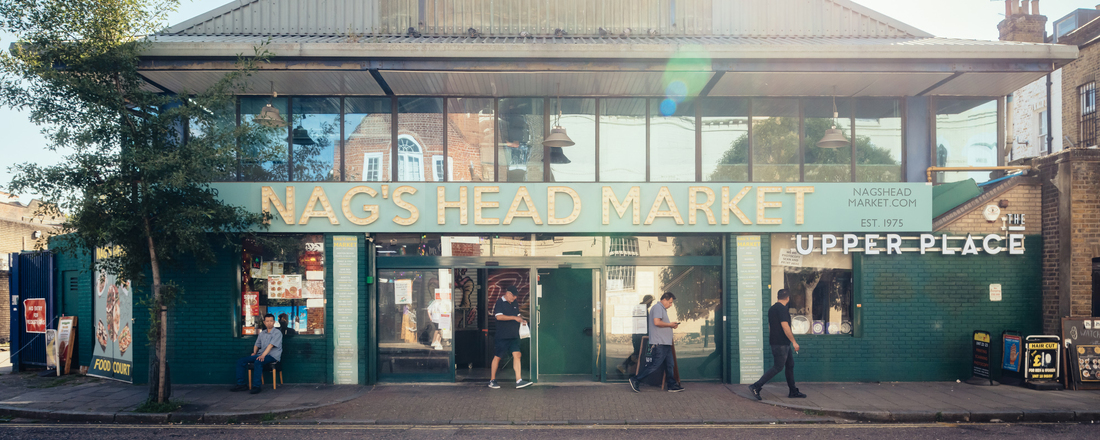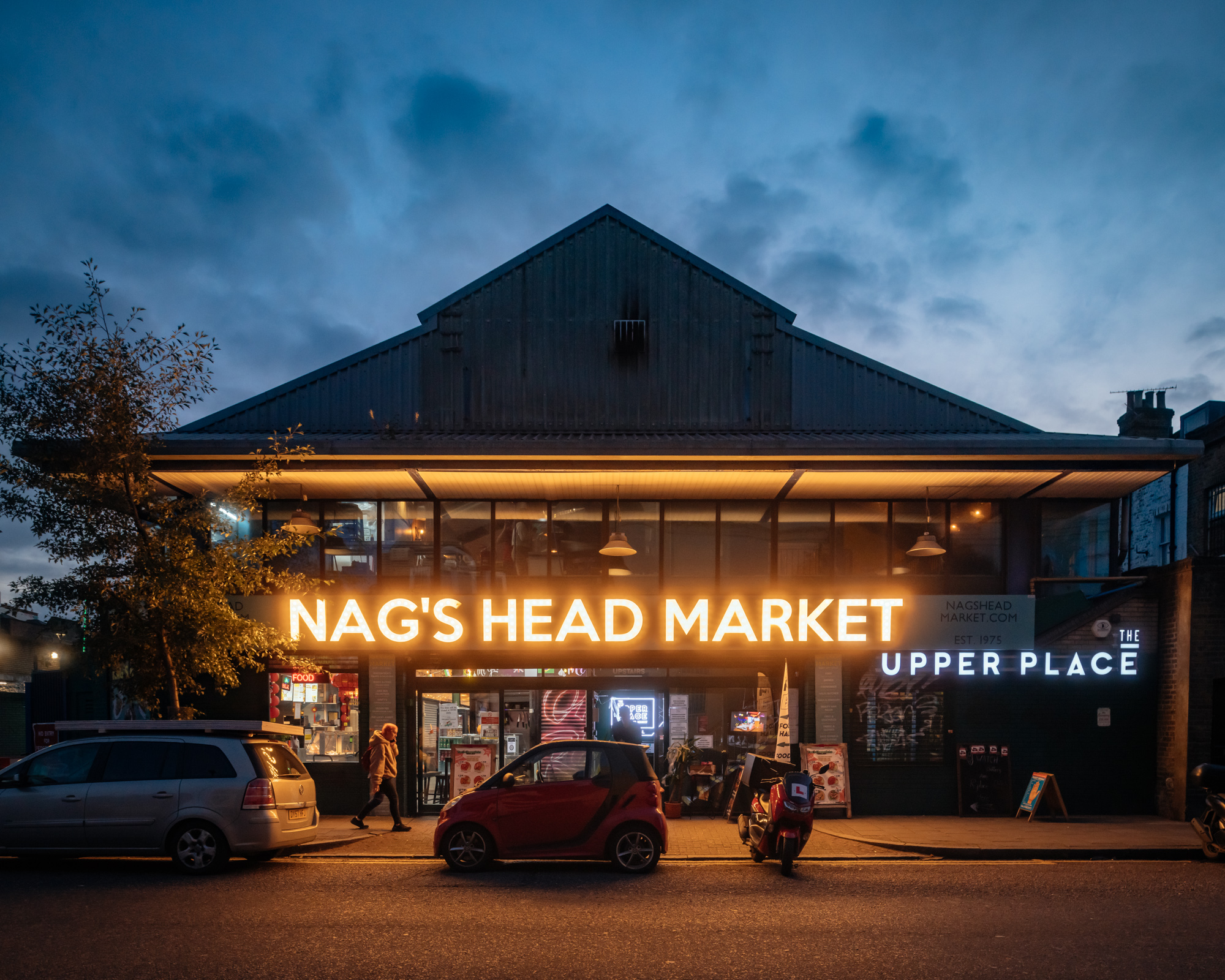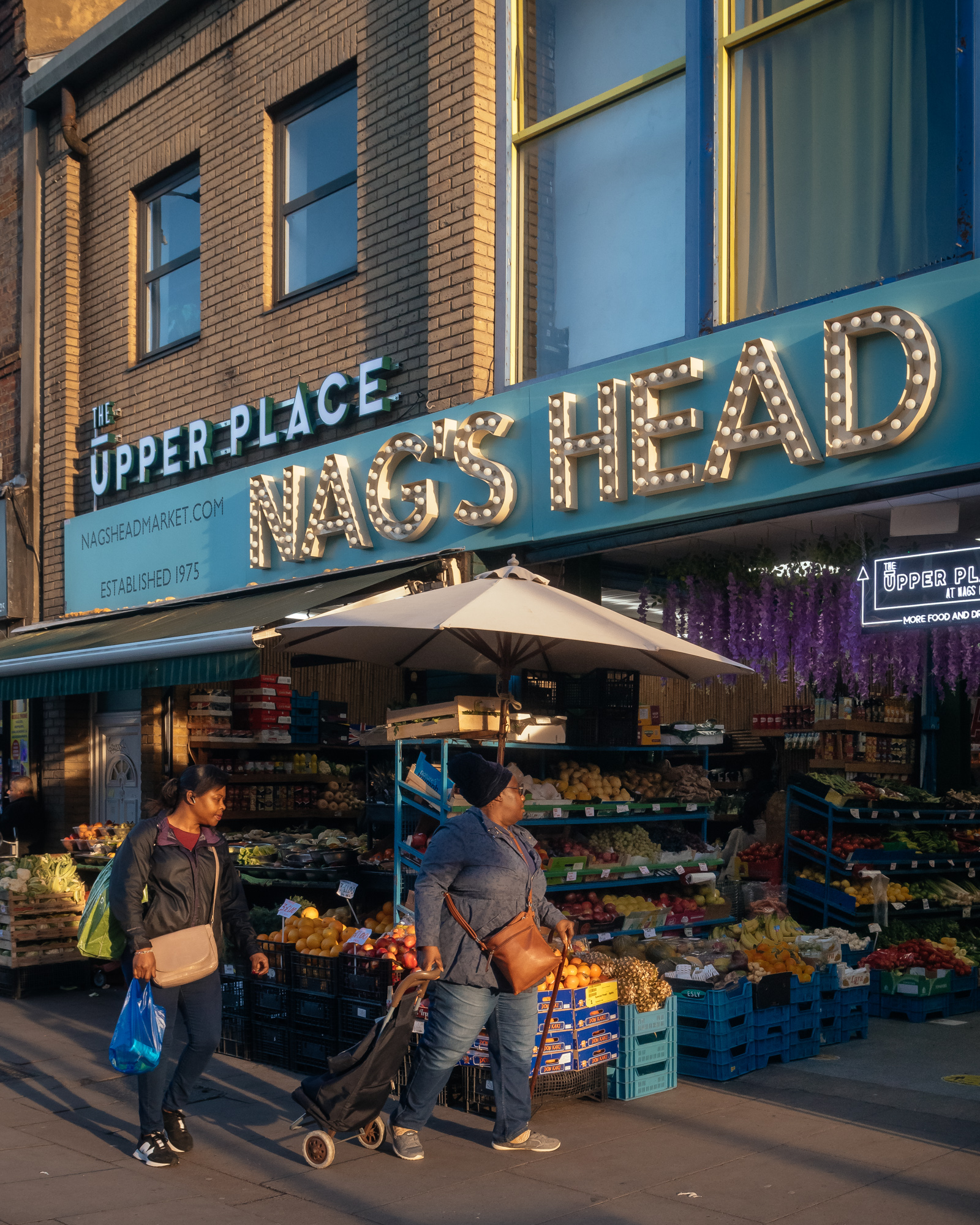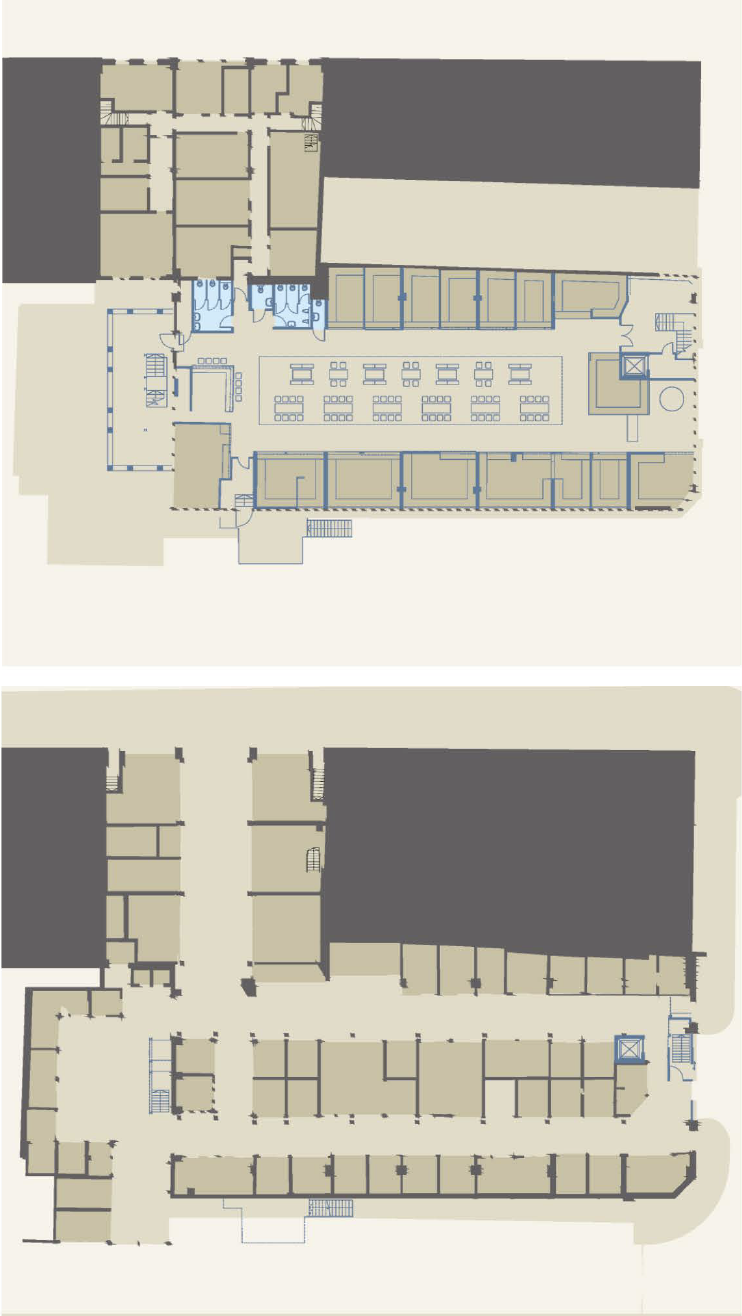Get updates from The Developer straight to your inbox Yes, please!
'Third spaces' like markets provide an important social and entrepreneurial value to the neighbourhood

Heaped plates of Columbian stews, cheap phone cases, £1 vegetable bowls and small nail salons; the Nag’s Head is a thriving covered market in Seven Sisters, north London, that has been serving its local community for over 30 years.
Tasked with retaining the existing character of the market while delivering much-needed strategic interventions, architecture practice Office S&M has delivered a celebratory renovation that looks to secure the Nag’s Head’s continued existence in a rapidly changing area.
The studio was originally commissioned by Finsbury Park in 2016 to support existing traders with visual merchandising, but its relationship with the market developed outside of the standard architect/client brief. "The market was a really key location in the area;’ says practice co-founder Hugh McEwen. "But it wasn’t doing things as well as it could for either the traders or the local community. The council knew that they needed some help but didn’t quite know what or quite know how."
Conversations with existing traders were the starting point to identify current challenges, after which Office S&M used a strategy-led approach to develop the project over six years. Working in an incremental manner, it sought planning permission for different pieces of work that could tactically transform the market space.
With rising land values, protecting so called "third spaces" like markets, which provide an important social and entrepreneurial value to the neighbourhood, is an increasingly challenging task
The most significant of these architectural moves is a new 600 sq m mezzanine level called The Upper Place. This offers seventeen new units for traders, alongside thirteen kitchens and four retail spaces, creating increased capacity for both current and future eateries. Long canteen-style tables form the focal point of the space, allowing visitors to sit and eat together.
Revelling in the everyday is captured throughout the renovation, where long-term infrastructure improvements have been prioritised over designing for individual stalls or traders to avoid the usual pitfalls of "zhuzhing up" a local community asset without sustainable strategic thinking.
Small but impactful interventions include improved entrances, circulation and signage. The Hertslet Road entrance, once the "back door" where bins were stored, has been transformed into a new entrance. Large windows in the building’s gable end allow visitors to see down into the rest of the stalls. Celebrating this new entrance, the new signage boldly announces the Nag’s Head Market in lights, adding a touch of glamour as dusk falls.
"The first photo we have is literally the bin truck outside of the back gate doing a pick-up," says McEwen. "Turning that into a new front was really important. But it’s also all those small things. It’s putting in new lights, and a new drop ceiling, the new flooring and all those little things that just help the day to day. They’re not particularly glamorous but they’re essential."
A key challenge for the project was addressing the range of differing needs on site. Aside from the obvious differences between an eatery, fishmonger and barbers, the market is also home to different business models, with transient day traders operating once or twice a week, while longer-term and more established businesses have permanent trading units. The dynamic nature of the market can be traced to its history as an outdoor car-boot market, becoming an enclosed site in the early 1990s in response to the neighbouring: Morrisons supermarket development.
Although the car-boot market now runs across the road, the day market in the central ground floor space is fundamental to the character of the Nag’s Head. Accommodating flexibility for transient traders was recognised as an important feature to preserve the balance of transitory and permanent. "The Nag’s Head has always had that transitory nature,” McEwen explains. “Turning it entirely into a food market was never the intention. In one of the planning applications, the exact percentage of food and retail within the market is stated, so it’s about preserving that balance, and we’ve solidified that through the planning process.”
"Markets have the ability to be perfectly tailored for the areas in which they exist"
The open-plan ground-floor space dedicated to the day market traders has been supported by the new signage and improved circulation to increase footfall, encouraging a clearer relationship between long standing establishments such as the fishmongers on Holloway Road with smaller units to the rear.
Flexibility has also been incorporated in the new kitchen and eateries in The Upper Place, where the shopfronts and kitchen units feature removable stud walls to create larger combined spaces, or break the units down into smaller units for future traders. "The site is preserved through the Islington local plan," says McEwen, "so we know that there’s always going to be a market in that location as long as it keeps being protected by the council and recognised for the impact that it has.”
"We’ve worked with a few different markets around London and I think they’re so important because they can do multiple things at the same time. Markets have the ability to be perfectly tailored for the areas in which they exist. And I think that’s really powerful because it allows them to sell things that people need, but they also provide that community support in an area because they’re made by their people. They’re not just transactional; it’s a social space that is really endangered in London and I think markets are in need of protecting."
With rising land values, protecting so called "third spaces" like markets, which provide an important social and entrepreneurial value to the neighbourhood, is an increasingly challenging task.
Nag’s Head Market is notable for its lack of specialism; it acts like a condensed high street with a wonderful jumble of balloons, bags, produce and takeaways all rubbing up against one another. There is something to be learnt from Office S&M’s slow, piecemeal approach to renovation that has ensured the continuity of the Nag’s Head original character and existing traders.
“Long-term infrastructure improvements have been prioritised over designing for individual stalls to avoid the usual pitfalls of ’zhuzhing up’ a local community asset”
Recognising markets as continually changing, the physical architectural interventions have clearly had to reconcile with designing for flexibility but the strategic approach offers a valuable insight into a sustainable renovation for an existing community of market traders. "For renovation and retrofit projects, you don’t just get one bite of the cherry; it’s a process," says McEwen. "Things will have to keep changing and keep being altered to and added to over time."
Nag’s Head Market is currently undergoing its next phase of renovation, working on improving the public toilets on the ground floor. "It’s an endless work in progress that’s you’re just helping on part of its way," says McEwen. "In 50 or 100 years, I hope the Nag’s Head Market is totally as it is, but also completely different."
Nyirna Murry is a landscape designer; architectural film maker and design writer @PATCH Collective
If you love what we do, support us
Ask your organisation to become a member, buy tickets to our events or support us on Patreon
Sign up to our newsletter
Get updates from The Developer straight to your inbox
Thanks to our organisation members
© Festival of Place - Tweak Ltd., 124 City Road, London, EC1V 2NX. Tel: 020 3326 7238
© Festival of Place - Tweak Ltd., 124 City Road, London, EC1V 2NX. Tel: 020 3326 7238




